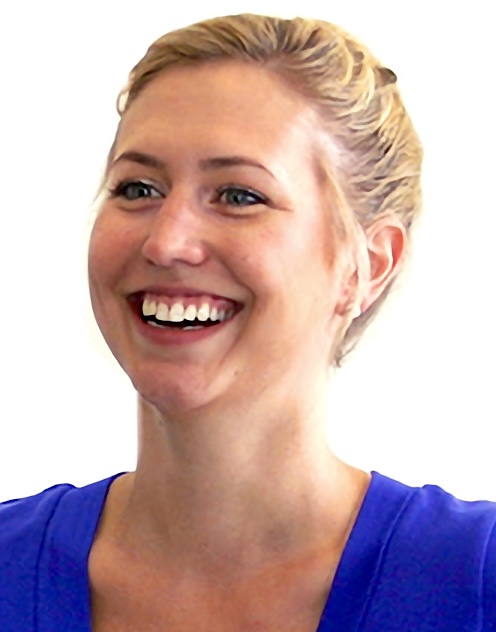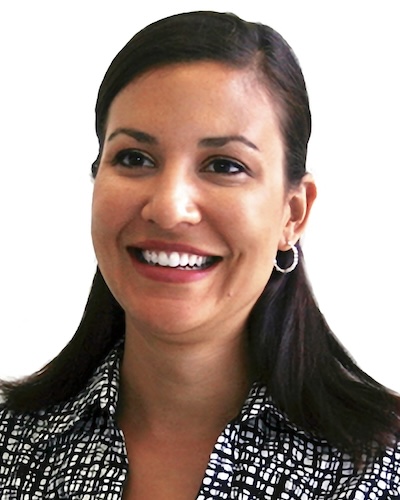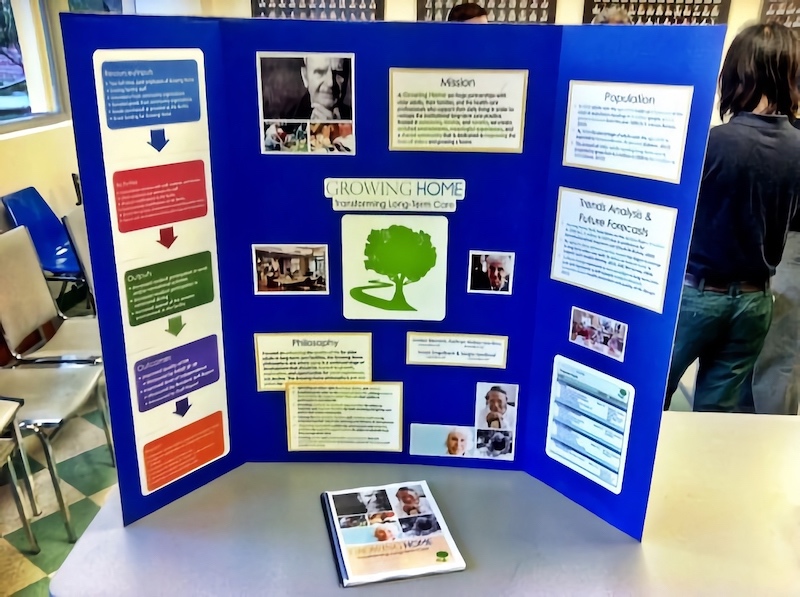Student Blog
Classes

Health and Wellness ⟩
January 16, 2013, by Alisa
Classes What are OS/OT?
I just came out of the Lifestyle Redesign class, and I enjoyed it! During my time as an undergraduate, I had my first exposure to Lifestyle Redesign, working as a student worker at the USC Occupational Therapy Faculty Practice, but I never truly understood what it was all about — or what happens behind closed doors. With the class that I’m taking, I’ll get a rich experience of what Lifestyle Redesign is all about. It is based on practicum, lecture, guest speakers, and observation hours. By the end of class, our instructor, Dr. Dieterle said that we’ll be able to implement similar programs such as weight management, pain management, diabetes management, et cetera. I have always been drawn to health and wellness at a young age. When I was 13, I created an incentive workout program for my family: every 30 minutes on the treadmill equals to 1 raffle ticket, and by the end of each month, we would raffle off prizes! I remember how much fun it was and how my family would line up to use the treadmill. I even committed to using it every day for a month, and I was able to improve my mile time by a minute. Those were the glory days. Now, I enjoy hikes, yoga, and Zumba. As a resident advisor I try to plan programs that involve health and wellness as well from hikes to time and stress management workshops. It is my passion to work in this field, and I hope to own my own health and wellness center some day. 😊
The greatest wealth is health — Virgil
⋯

Returning to school ⟩
January 11, 2013, by Kendra
Classes School/Life Balance
Happy 2013 blog readers! I hope everyone had a safe and enjoyable holiday, I know I did! Below is a picture of my husband and I freezing our bums off in the Pacific Northwest!

But now it’s back to life, back to reality, and back to school. This semester will be unlike any I’ve had so far. The final semester of the MA OT program is when we get the opportunity to begin specializing and focusing on different practice areas. This spring I’m taking Ergonomics, Dysphagia, Motor Control, and Lifestyle Redesign. Each, I believe, will allow me to be a better applicant and employee for working with adults in acute care or outpatient care.
While it is very exciting, it is also terrifying. It’s as if when the ball dropped in Times Square to welcome in 2013, an alarm clock went off in my head screaming ‘real life, real career is coming, be prepared!!’ I feel this tension has settled over me and my peers as we take the final classes and final steps towards becoming certified occupational therapists. And as we near the finish line the alarm clock screams questions: are you sure you want to work with adults? You are so good with kids! Are you sure you want to learn Ergonomics what about Sensory integration? Where do I work? What setting? What side of town? It goes on and on and on.
These same questions overwhelmed me when I was in undergrad, but then I did not have the faculty and peer support and information to help me make smart choices. I know, despite the panic, that I will be supported as I make my first steps as an OT. Yet another reason why I love this school, they prepare me to be a great OT on paper and in person.
That being said, the alarm clock still chimes, but this time I’ll funnel that panic into productive preparation!
⋯

The Road to Centennial Vision: USC–Thailand Collaborations ⟩
December 17, 2012, by Alisa
Classes Externships International
I recently had a poster presentation for my community programming class! It was super exciting to be able to see the finish products of our semester long work. Throughout the project, I learned that although working independent has its perks and glory, it could be very hard to motivate oneself to do project. No joke. Even though I felt comfortable asking my professor any questions I had, it would have been nice to have a partner whom I could bounce ideas with. So, I’ve learned my lesson, but in case you’re wondering about my project, which I’m really excited about. Here is a little synopsis of it.
Title: The Road to Centennial Vision: USC–Thailand Collaborations
Goal: My goal for this potential collaboration is to help USC occupational therapy students and faculty realize the American Occupational Therapy Association Centennial Vision through expanding international experiences and collaborations in ongoing and future projects in order to become more “globally connected.”
Objectives:
- To foster a relationship between USC OT Division and Thai universities and organizations
- To address a lack of resources available for students and faculty interested in getting international experience in Thailand
- To provide unique opportunities for collaboration in future projects and research
- To offer a reference by those interested in joining or creating new programs in Thailand so that they know what services are already being provided, what needs remain, and what possibilities for collaborations exist
- To foster a better understanding of the Thai culture and way of life and promote tourism
One potential collaboration I see happening is with the Thai Elephant-Assisted Therapy Project. Here’s a little more about the project:
From the research that I have gathered, a unique opportunity for collaboration is with the Thai Elephant-Assisted Therapy Project (TETP): an innovative intervention for individuals with autism. The TETP was started in 2007 with a two-fold intention: to sustain conservation and welfare of elephants and address autism. The program has provided a binding force that allows for collaboration across disciplines from researchers, practitioners, and students. The research studies have collected data from participants ranging from 11-19 years old and only female elephants were used. Animals that have been known to provide such therapeutic benefits include horses (hippotherapy) and dogs. Young elephants are used in the program since they tend to be more playful, which is considered a plus when working with children with ASD since they tend to have difficulties engaging in play. According to Zailani (2012), the activities incorporated in the program are preparation (e.g., money management when buying snacks for elephants), sensory integration (e.g., singing the elephant song and riding), social skills (e.g., with each other and elephants), and daily living skills (e.g., bathing and grooming). This program is available for free for children with ASD and has been researched by Dr. Nuntanee Satiansukpon, at Chiang Mai University.
I’m planning to do my leadership capstone in March in Thailand and would love to be able to see this in action. Stay tuned!
⋯

FIN ⟩
December 14, 2012, by Ricky
Classes School/Life Balance
Ahhh . . . nothing like being done with another semester. On the real, these last two weeks were the roughest yet (for me). The schoolwork wasn’t that hard, it was the volume of stuff that piled up towards the end that did it. That, and my time management skills (or lack thereof . . . no, definitely lack thereof). I was done on Wednesday — it’s Friday now, and I am still recovering. My battle scars were comprised of tightness in the chest, tension in all parts of my body down to my little toes, and some peculiar behavior in my eyes — darn you laptop screen! (fist clenched . . . ever so tightly). My adversary consisted of the following:
Week 1
Monday — early final (yay)
Thursday — group presentation
Friday — community program poster presentation + proposal (oh, roughly 100 pages)
Week 2
Wednesday — 10 page paper
Wednesday (yes, same Wednesday) — 10 page case study
To some, it may seem like just another finals period, but in my lived-experience, I no likey :( The happily-ever-after in this story is that I am still breathing. I am always amazed of what we are capable of when we are put to the test (literally, in this case). Plus, there’s always room for it to be worse. I always tell myself that it isn’t really that bad until I get that bad metallic taste in my mouth . . . you know what I mean? You’ve read Hemingway’s The Old Man and the Sea, right? Anybody? Anyhow, thank you all for the chance to vent a bit. Now for a little recess . . .
⋯

Crossing the Finish Line ⟩
December 12, 2012, by Amber
Classes
Well, it’s already finals week and I’ve almost completed another semester of grad school! I cannot believe how quickly the time has passed, particularly this semester. My schedule was especially packed as I took on part-time work this school year. It has felt very good to finish up one class after another, starting last Friday when I presented a community program that I had created with a group. That project was the culmination of an entire semester’s work in my community programming course, and we presented our poster along with all of our classmates in an inspiring display of creativity and hard work. I felt proud to explain my program to other students and faculty that attended the presentation. Today, I turned in a lengthy case study paper for my Health Promotion and Wellness course. I also took a final exam for my Adult Physical Rehabilitation and Geriatrics immersion course. In addition to the written exam, we will have a lab practicum tomorrow morning where we will execute an actual occupational therapy session based on a case study. What am I going to do in a mere 18 hours when all of this hard work is complete? I’m going to Disneyland! I am looking forward to celebrating the end of the year with Mickey and relaxing at last.

My poster presentation
⋯





